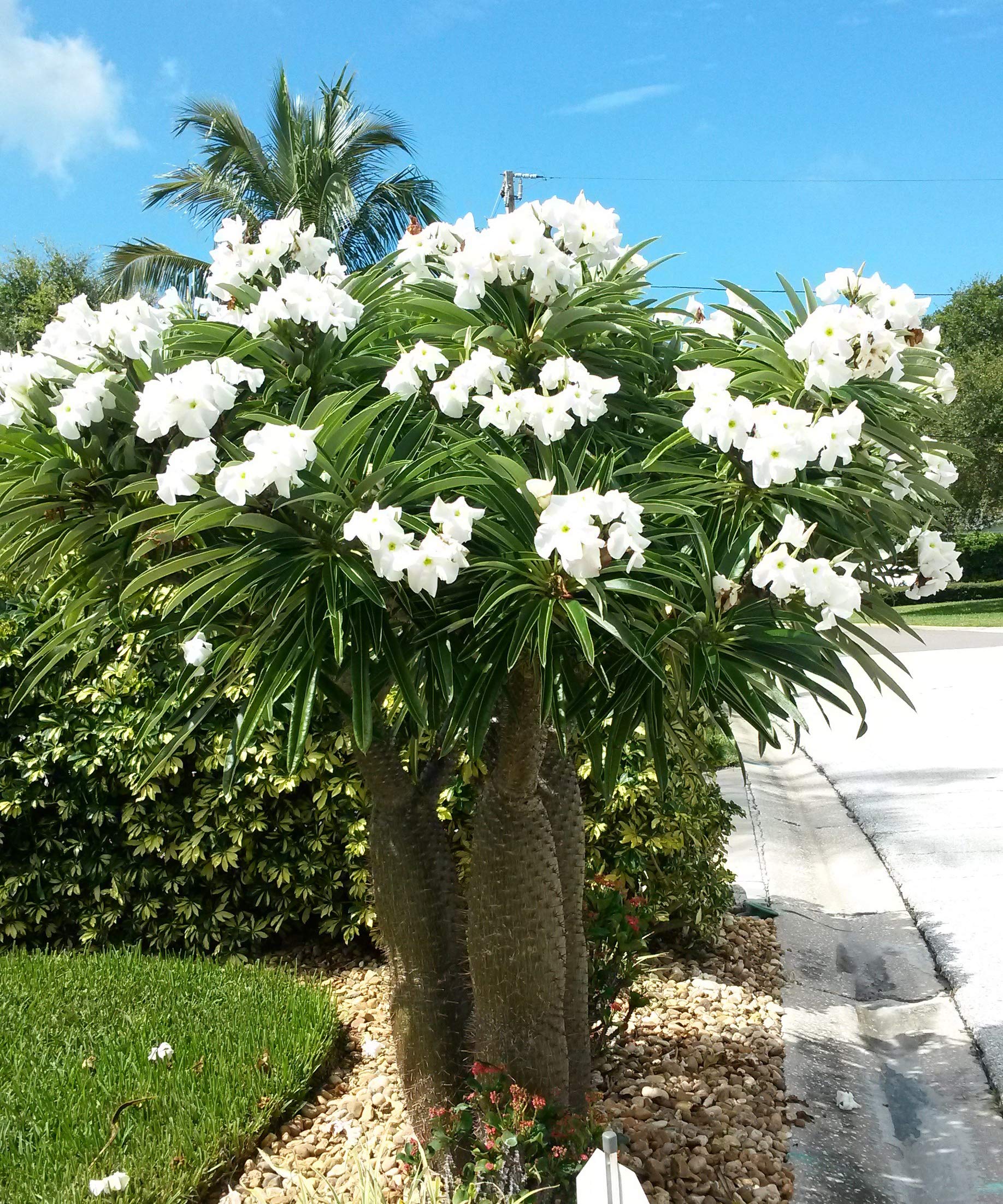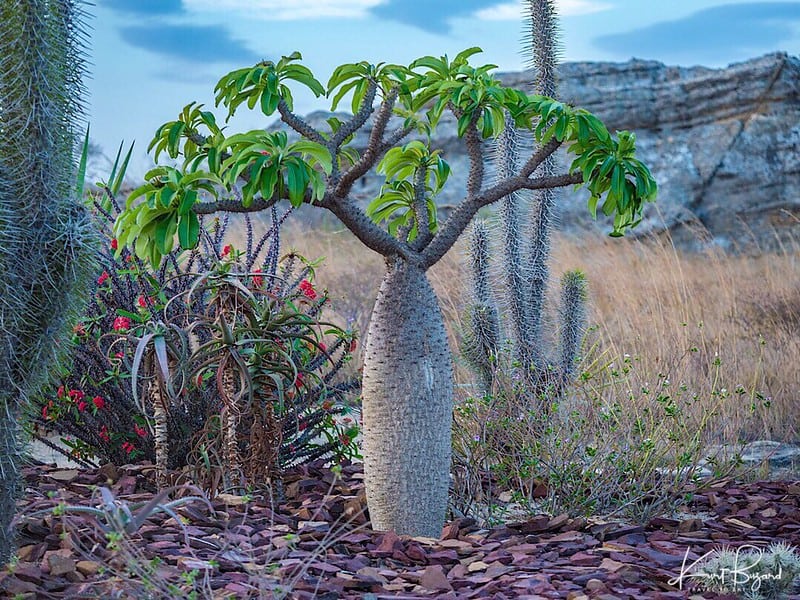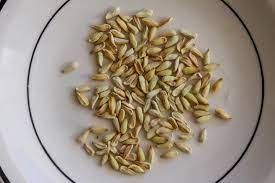Pachypodium lamerei,
Pachypodium lamerei,
Couldn't load pickup availability
Pachypodium lamerei, the Madagascar Palm, will reach 15 feet in nature, as a houseplant, they are much smaller. It is a native of Southern Madagascar. The Madagascar Palm is not really a palm. It is actually a succulent related to Plumerias. This popular Pachypodium is grown for its shiny silver trunk covered with thorns. The plant grows fairly quickly and can attain a height of three or four feet in just a few years. It can be grown indoors if you can provide a very sunny window. Pachypodiums are great for begginers. All parts of plant are poisonous if ingested. When small, Pachypodium lamerii looks rather like a fat, spiky barrel cactus topped with a fringe of shiny green leaves. Its stem is armed with ferocious spines. In time, the stem of Pachypodium lamerii elongates dramatically and, in a few years, it forms a long vertical trunk. Its trunk still has those impressive spines. Pachypodium lamerii often develops a single-stemmed trunk, some individuals may develop branching trunks. The leaves form only at the top of the trunk, like a Palm Tree. Its flowers are pure white with a deep yellow centre and look very like the Plumeria rubra. Pachypodiums are related to Frangipanis, both plants belong to the Apocynaceae family. Only mature plants bloom, it is in late Spring to early Summer. The flowers are 2-3 inches in diameter. Prior to it's first bloom of the Spring, this Pachypodium produces amazing seed pods that look like cucumbers. Left alone, they eventually open along the seam revealing great numbers of white-winged seeds. Hardiness zones 9-11, (5°C/40°F,-5°C/25°F) in Winter. Pachypodium lamerei needs full sun to light shade with warm temperatures. Water sparingly. The Pachypodium tends to lose its leave and go dormant in Winter. It then needs very little water. Use a potting mix consisting of 2 parts sand to 1 part peat moss to 1 part loam with small gravel added for increased drainage.
Price is for 10 seeds

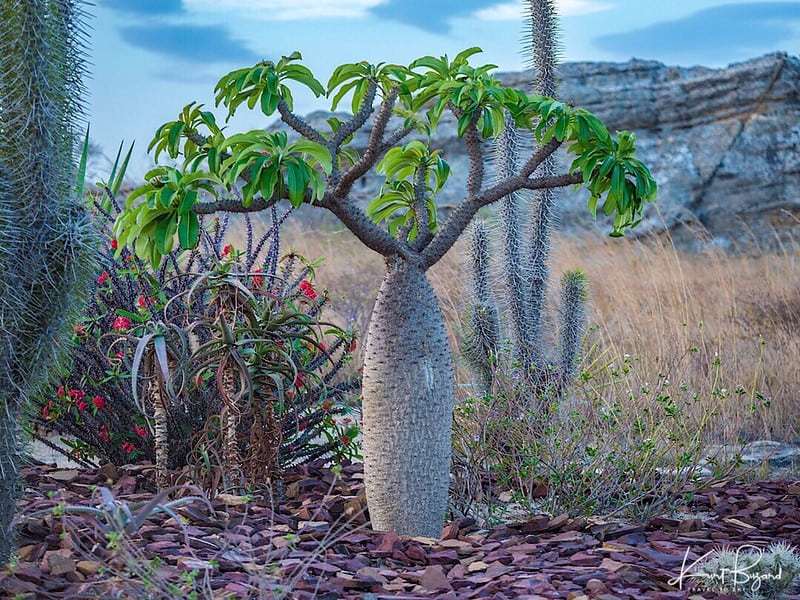
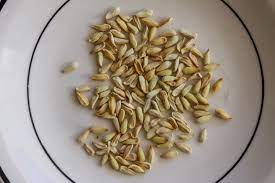
Collapsible content
Fair Use Disclaimer
Our website may contain content not authorized for use by its owner but use of this material falls under the guidelines of fair use (They are for educational purposes only to show the plant only).
If you want to find our more or own any images displayed on our website and disagree with our assessment it constitutes 'fair use' please click here.

